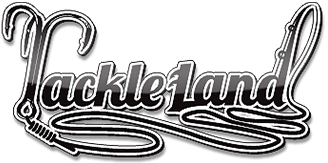Lake Borumba Bass – Understanding the Code By Rod Thompson”
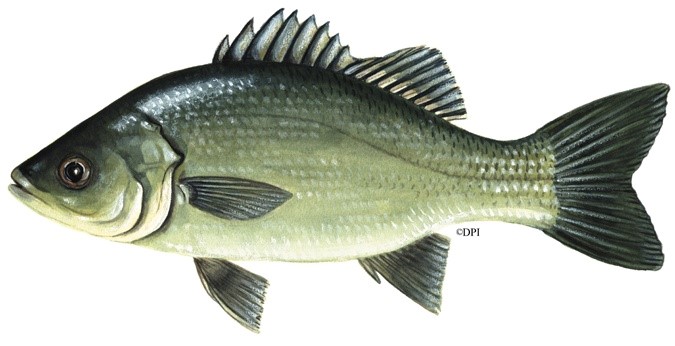
Situated
Lake Borumba is situated 50klms south of the old Queensland gold mining town of Gympie which is a 90 minutes drive north of Brisbane.
Once you leave the Bruce Highway to reach the dam you travel through some of the picturesque parts of the Mary Valley that were once going to be lost to the construction of the Traveston Crossing Dam.
The construction of the Traveston Crossing Dam was stopped by the Queensland Government in 2009. Approximately 11klms from Lake Borumba you will come into the picturesque little town of Imbil.
Imbil has everything that you would require for a day at Lake Borumba whether it is fishing or just sightseeing. The town has a grocery store that also sells fuel, a butcher, cafes, and hotel and of course a tackle shop.
For the day visitors the dam has a number of sheltered picnic tables where you can sit down and have a picnic and watch the on water activity. The sheltered picnic tables are situated close to the newly constructed two lane boat ramp.
History
The damming of Yabba Creek was completed in 1963 and since then the dam wall height has been raised another 3.1 meters. The construction of Lake Borumba was for the storage of water for the irrigation of crops and produce that were grown in the Mary Valley.
With the completion of the dam wall a fish hatchery was erected just below the dam so that native fish could be bred for release into the newly formed Lake Borumba.
The hatchery building is still there at the back of the camping ground with parts of the old viewing room and breeding ponds falling into disrepair. The author of Grant’s Guide to Fishes, Ern Grant was the first person to breed native fish fingerlings at this site for release into Lake Borumba.

Golden and Silver Perch were the only fish bred at the hatchery. With Golden and Silver Perch being bred at the hatchery, other species required to stock the dam had to be purchased and obtained from other districts.

Australian Bass, Golden Perch, Silver Perch, Mary River Cod, Gar Fish and Dawson River Saratoga were all stocked in Lake Borumba.
Lake Borumba Fish Stocking Association {LBFSA} has been actively involved for many years continuing to stock the dam with fish for anglers from all over to catch. The bass do not breed in the dam as they need to must migrate to brackish water to spawn.
The 200 Saratoga and 86 Gar Fish that were originally stocked in this the dam have been found to be breeding and have formed a self sustaining population. Therefore Saratoga and Gar Fish are no longer stocked in Lake Borumba.
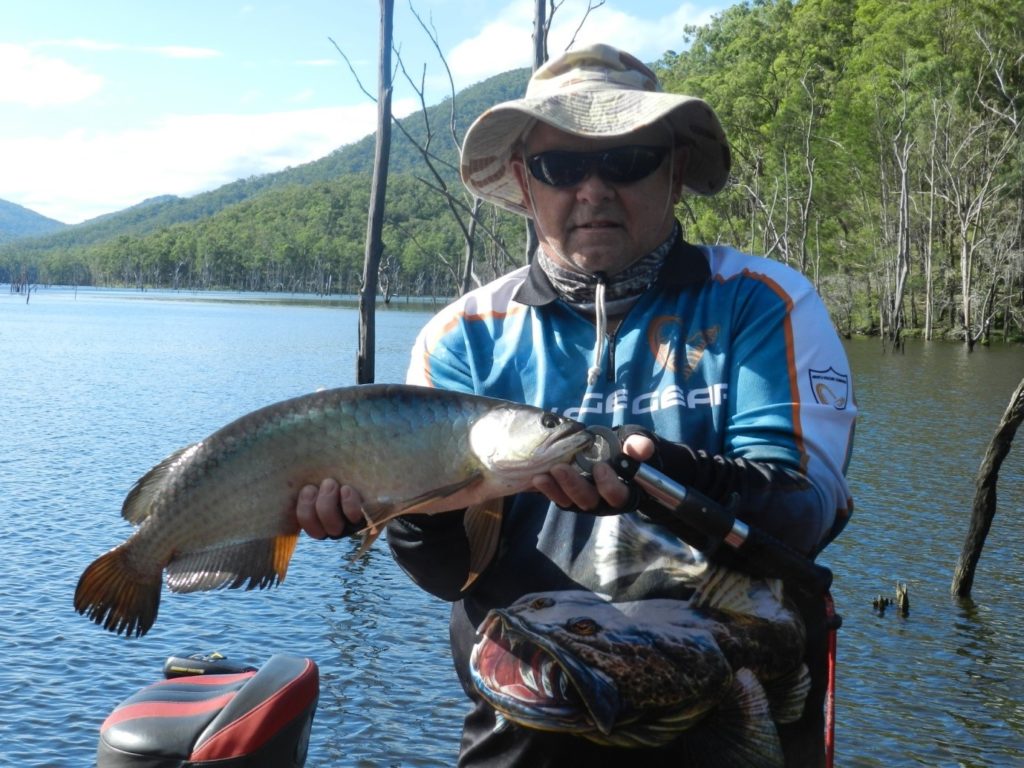
There is a healthy population of Bony Bream in the dam that are providing to be a good food source for the stocked fish.
Bony Bream are not native to the dam. The Australian Bass, Golden Perch, Silver Perch and the Mary River Cod are stocked in the dam as fingerling and these fingerlings have been purchased with the money granted to the LBFSA by the Queensland Government through the Stocked Impoundment Permit Scheme {SIPS}.
Money granted by the Gympie Regional Council and funds raised through the Lions Mary Valley Fishing Classic also assists with the purchase of fingerlings.
This competition the Mary Valley Fishing Classic is held yearly on the first weekend of November with the competition being conducted from Borumba Dam Camping Ground.
The Borumba Dam Camping Ground is situated just below the dam wall with plenty of room for camping and it has all the necessary amenities.
Parts of the Dam
Lake Borumba has three creeks that feed into the dam. They are the Borumba, Yabba and Kingaham Creeks. The Borumba Creek arm of the dam is very short, narrow and not suitable for some boats.
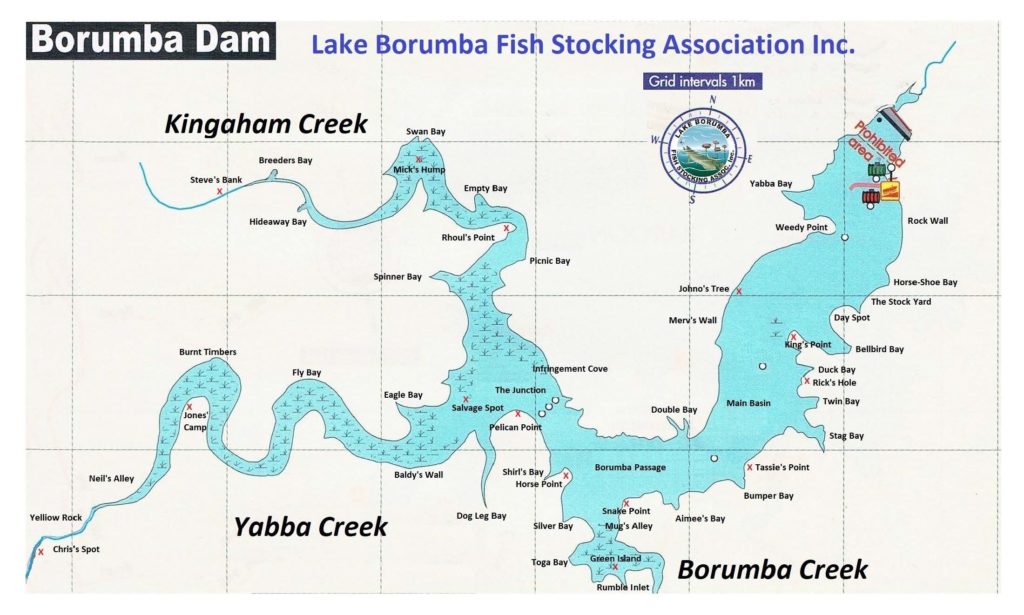
The Kingaham and Borumba arms can be traversed for a couple of kilometres. Care must be taken when travelling in these two arms of the dam for underwater obstacles mainly sunken timber.
There are marker buoys that highlight the fact that there are underwater obstacles. If you know the dam quite well you will understand why caution is needed these two creek beds are very narrow and are lined with dead trees.
I have seen what damage can be inflicted on both aluminium and fibreglass boat after coming in contact with one of the many trees in this dam. Electric motors also suffer quite a bit of damage from underwater obstacles when operating from the junctions of the two main creeks and up.
Due to the age of the trees that are standing in the dam, you will find that nearly all the standing trees are now hollow inside and it will only take a small bump from a boat to cause some of these tree to topple, make sure that your pride and joy is out of the way of any falling tree. You must exercise extreme caution when boating around any of the standing timber.
Best Bass Time
The bass in Lake Borumba can be caught throughout the day but like all dams the fishing will slow considerably once the sun starts to get high.
Early morning and late afternoons are the best times to fish for bass in this dam as the bass appear to go into shallower water and they tend to rise in the water column.
When the fish rise they will gladly take a well presented lure off the surface. Also while presenting lures on the surface for bass be prepared for the unexpected as you are also likely to encounter one of the dams many Saratoga.
Many of these Togas are getting close to that 1 metre mark in length, and these fellas will happily take your lure to the nearest snag.
Lake Borumba is surrounded by a lot of thick rain forest-like timber on one side and on the other side of the dam there are lightly cleared edges. With this amount of timber on both sides of the dam, insect life is plentiful.
Cicadas are in abundance at certain times of the year and these little morsels are part of the main diet of the Bass. If the Cicadas are about you will hear them singing in the nearby trees and you will quite often see these insects struggling to get airborne from the water’s surface.
If the cicadas are about, don’t be afraid to tie on a cicada shaped lure or any other lure that makes a disturbance on the water’s surface.
Areas to target. After leaving the boat ramp have a look around the edges of the little bays across from the boat ramp for potential areas to catch bass. Some of these little bays will hold fish and it’s a pretty good area to drop your shrimp and red claw pots.
If nothing can be found in these spots then move further up the dam. About half way down you will come across a very big weed bed that juts out into the middle of the dam, sound around this weed bed as fish are likely to be congregating around the edges of the weed.
After leaving the big weed bed, while still heading up the dam you will come across a yellow buoy in the middle of the dam, sound around this buoy a few times as fish are known to school around this area.
From the big weed bed up the dam there are also a number of little bays that would provide good cover and protection for the bass.
Obstacles & Hazards in Lake Borumba
As you travel up the dam, the Borumba Creek arm is to your left and the Kingaham and Yabba Creek arms are to the right. The Borumba Creek arm is short and has a lot of underwater obstacles. If you plan to go into this creek mouth, please exercise caution and travel at a very slow speed.
Outside of the Borumba Creek mouth there is a flat area that goes into a bay, try for fish on the flat area and on the edge of the creek drop off. As you go up the dam and if you go to your right you will come to the junction of the Yabba and Kingaham Creeks.
Just before entering the junction you will go between a row of white buoys that are sign posted with the words ‘Caution Underwater Obstructions’, which means take care and be on the lookout for underwater objects.

As you go into the junction, the Yabba Creek arm goes around to your left and Kingaham Creek goes to your right. Good sized bass can be found up these two arms at different times of the year. Water quality and clarity also plays a big part in whether there are fish up these arms.
If the water quality and clarity is good and if you are game enough to travel to the upper reaches of the Yabba and Kingaham Creek arms, be prepared to catch some good fish.
On the way up these arms be prepared to pause for a while and flick your lure around the many patches of water lilies that line the edges of the creeks as these will always harbour a bass or two.
Fishing The Hazards
The bass will get under these throughout the day for protection and it’s your job to entice them out with your lure. Any sort of lure or spinnerbait flicked close to the edge of the water lilies will entice a strike if there are fish hiding underneath.
Don’t be afraid to throw your lure to the same spot a couple of times, because if there are fish there they will become annoyed at the constant noise, flash or rattle of the lure and strike at the lure.
Flick your lure directly at the lilies or better still try to run you lure parallel to the lilies as slow as you possibly can. With the abundance of dead standing timber that is scattered throughout the dam these areas provide cover for the food source for the bass population.
Besides shrimp and red claw the dam has a healthy population of bony bream that the bass feed on. Bass are known to grow very quickly if their diet consists of mainly Bony Bream.
Bony Bream can be seen tail flicking the dam surface when the water is calm and still. You will notice after you catch a few of the bigger fish that they are very fat and healthy. Fish over 50cm in length and weighing over 2kgs are not uncommon in this dam.
Methods
Live baiting. With the abundance of weed beds scattered around the dam’s edges there is no shortage of live bait, such as shrimp and red claw. Shrimp can be caught using a fine mesh shrimp trap and red claw can be caught using an opera house trap.
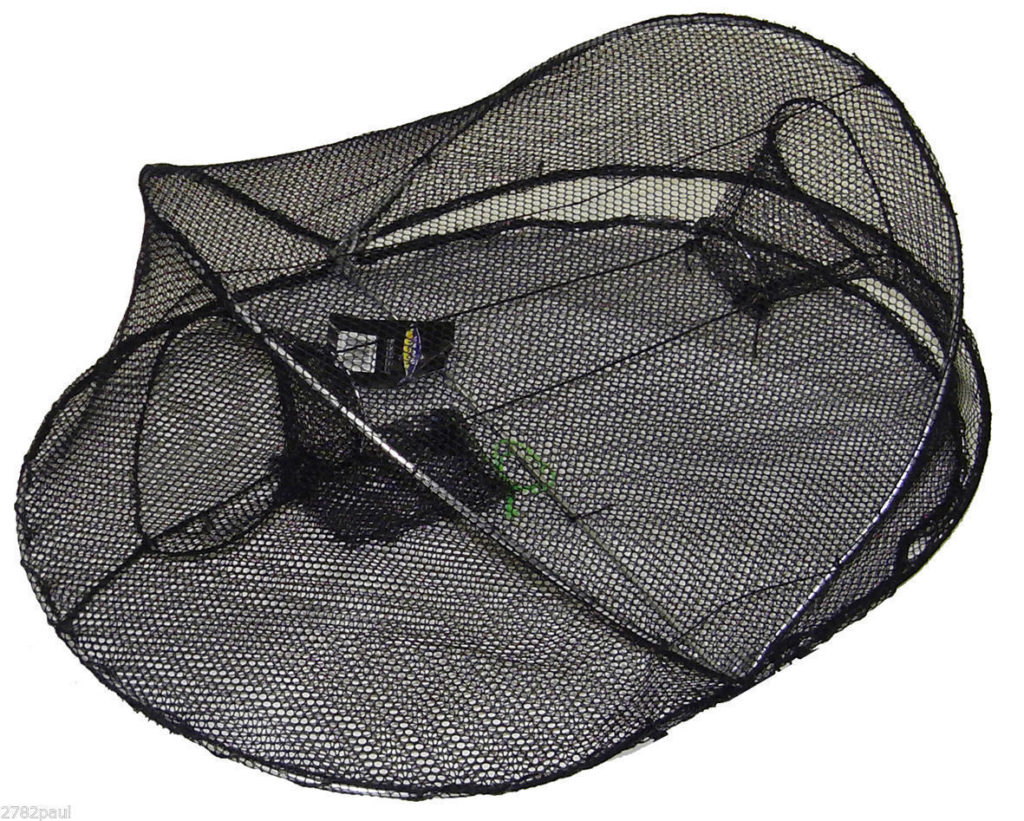
These bait traps can be purchased from most tackle shops.
Make sure that when you are using these traps that you have a 150cm float attached along with your name and address on the float and the trap. If you are after shrimp, bait your fine mesh shrimp trap with fish frames or any wet or dry dog food.
If you are after red claw look at using baits in your opera house trap such as dog/cat food, potatoes, pumpkin or rock melon, fish frames can also be used in these traps.
After catching your bait keeping it alive is essential. Use your boats live well or you could simply use a bucket or tub with an aerator fitted.
Pinning your bait through the tail using a wide gap hook and dropping it down beside a standing tree will entice a bit of action from the local bass. You may need to add a small sinker or split shot to your line to get the bait down quicker into the strike zone.
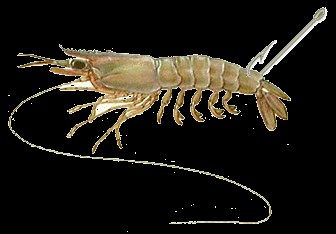
Bobbing the bait up and down will also attract the attention of the bass. Worms can be used and these can be dug from your garden or purchased from a Tackle Shop. I would not recommend using salt water yabbies or live fish from outside this area to catch fish in this dam.
A good place to start fishing with your live bait would be in the timber at the junction of the Yabba and Kingaham Creeks or around the large weed bed that is halfway up the dam.
There are also some good spots to use live bait for bass further up these creeks if you are prepared to travel the distance.
Trolling Lures
Trolling is another productive method of fishing with most of the dam’s main basin being free of timber. Just down from the boat ramp there are some very good steep and rocky edges that would be ideal for the troller to pick up a few fish.
The best spot to start trolling would be the big bay on the far side of the dam about 500 meters down from the boat ramp.
You will also encounter bass while trolling beside the big weed beds that is half way up the dam. When trolling in the main basin look at using a lure that will get down a couple of meters. Bibbed and bibless lures made by Smak, Daiwa, Rapala, Jackall, Lucky Craft and many other companies produce lures that will get down to the required depth.
Active fish will take most lures if the lure is in their face. Metal blades produced by companies like Evergreen, TT, Ecogear and Damiki can also be trolled and will catch bass.
Heavy spinner baits can also be trolled, but these must be trolled a long way back from the boat to get them down to the required depth. Trolling any sort of lure will catch you fish as long as the lure is presented correctly.
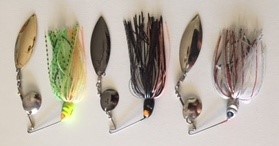
Make sure that the lure swims correctly and you can feel the lures swimming action through the vibration and the action from your rod tip. The lure has got to get down to the required depth. Don’t troll too fast as you want the lure in the strike range for as long as possible.
If your trolled lure fouls on a piece of weed bring your lure in and clear the weed from it. Any sort of weed fouling your lures hooks will hinder the lures action; you need a good vibration and a good swimming action to attract the fish’s attention.
Essential Equipment
I have seen quite a few people trolling $30 plus lures like Jackals and Megabass through the timbered area at the junction of the Yabba and Kingaham creeks, this is not my cup of tea as I don’t like losing lures to snags, but for the people that are game enough to do so they have pulled some good fish out of this timber.
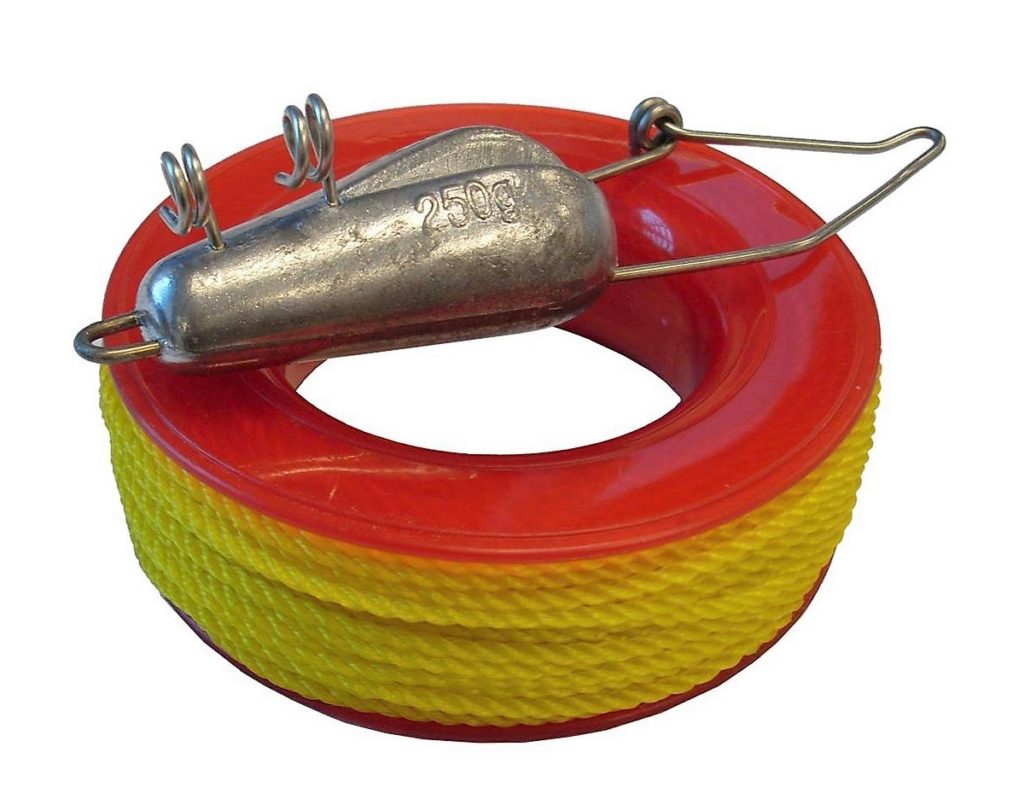
Troll as slow as you possibly can through this timbered area with your rod being held in your hands not in a rod holder. You will always get snags but after a while when you are accustomed to the feel of your lure going over a snag you will learn to automatically drop your line back as the lure goes over the snag and your lure will not get caught up.
Dropping your line back as you go over a snag lets your lure rise and straddle the snag and not get caught up. If you do get caught up let your line go slack and most of the time your lure will float off.
It certainly pays to carry a Lure Retriever with you just in case you do get snagged and you cannot get your lure off.
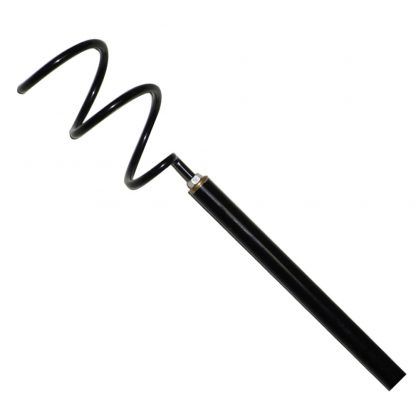
A Lure Retriever cost you about $30 and recovering one expensive lure from a snag will cover the purchase price of the Lure Retriever. Most of the time when you have your retriever going down to the snagged lure all it will take is the impact from the retriever hitting the lure to get it free.
If the lure is well and truly snagged you must endeavour to get the retriever caught on the lures hooks and reef if off the snag. With a lure retriever make sure that you have some heavy cord or line attached so that you are able to pull your lure off the snag.
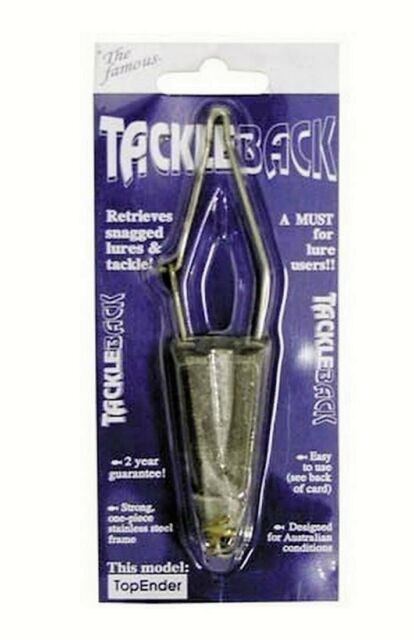
Cast and retrieve is one of the better ways to target bass and by doing this you are testing your skills against the fish. Firstly you must find the fish using your sounder or if you don’t have a sounder find the creek beds and drop offs where the bass are likely to be sitting or hunting.
If you find that the bass are sitting high in the water column count your lure down to the level that they are sitting and keep targeting that depth to entice a strike.
It is of no use to cast a lure out and let it hit the bottom if the fish are sitting high in the water, if they are sitting on the bottom yes by all means let your lure sink to the bottom.
When casting lures to suspended fish, know the sink rate of your lure so that you have the lures in the strike zone, count it down to the depth where the fish are hanging.
Test the lure beside the boat and see how long it takes to hit the bottom and then work out how long it is going to take to sink to the correct level that the fish are sitting.
If you have a reasonably good sounder use the sounder to see how long it takes for the lure to reach the right depth. Don’t just cast out and close the bail arm of your reel hoping to catch a fish on you retrieve you must let your lure sink to the optimum depth and then start your retrieve.
Which Lures Work in Lake Borumba
Varying your retrieve rate will attract the attention of the fish. Lures to use in the cast and retrieve method that will catch you one of the local bass are the likes of Jackal, Megabass, River 2 Sea, Berkley, Manns, and Rapala and so on; there are too many brands to mention. Halco Spoons and Twistys are the craze at the moment for catching bass.
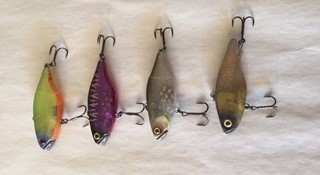
These metal lures are what you would use in the saltwater to catch a tailor but they are working quite successfully on the local bass population. Use these metal lures in weights up to 30 grams and make sure that they are worked in the zone where the fish are holding.
Soft plastics rigged on jig heads are also very effective in this dams. Soft plastics made by companies such as Charlie Brewers, Ecogear, Zman and Bang in the 10cm length range will take a Borumba bass. Use a suitably weighted jig head to pin your soft plastic on. See picture 3.

Jig Heads 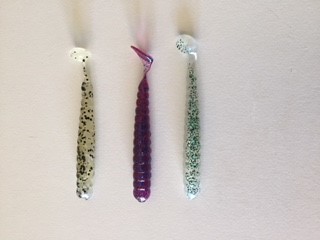
Plastics
Make sure that when you have put the soft plastic onto the jig head that soft plastic is kept straight, being straight it will look more natural in the water and the tail/body section will have a good shimmying action.
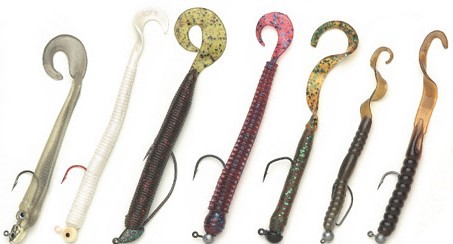
There are some Sunshine Coasts gun anglers that swear by using the Evergreen Little Max blades in the colours, Metallic Ayu, Baby Gill and Dynamite to catch their bass.
These blades come in various weights but I would stick to ¼ and ⅜ sizes. These blades also have a few holes on top for attaching your line, check the action of the blade when you attach the line to see that the swimming action is suitable, if not suitable use one of the other holes to attach your line.
Each hole gives the blade a different swim/vibration action. Most blades can be trolled as well as being used for cast and retrieve. Spinner-baits are ideal if you want to cover a fair bit of territory along the dam’s edges and around the weed beds.
I find that using a ½oz spinnerbait works best in many of the dams especially this one.

Target areas around weed beds and snags with your spinnerbait as these are the areas that bass are likely to be holding. With the way spinnerbaits are constructed they are less likely to become caught up when thrown into snaggy areas.
Like many of the hard bodied lures and soft plastics that are out there on the market they will come in a wide varity of colours, sizes and shapes.
Picking the right colour to use is a massive choice. I like to stick to using a natural colour or anything that is purple or in the white/grey colour range.
Gear that I use when fishing Lake Borumba for bass is pretty simple. You don’t need to use anything that is too heavy. A light rod in the 2-4kg or 3-6kg range coupled with a spinning reel in the 1500 to 2500 size will ideally suit the techniques to catch a Lake Borumba bass.
There are a lot of quality rod and reel combinations at reasonable prices on the market today that would cover all aspects of fishing whether you are using lures or bait.
Look after your bass when you catch one. If you are planning to eat your fish kill it humanely and put it on ice. There is nothing wrong with taking a fish home to eat, but remember your bag limit is two fish over 30cm. If you are fishing in a Stocked Impoundment the Possession Limit is 5 fish.
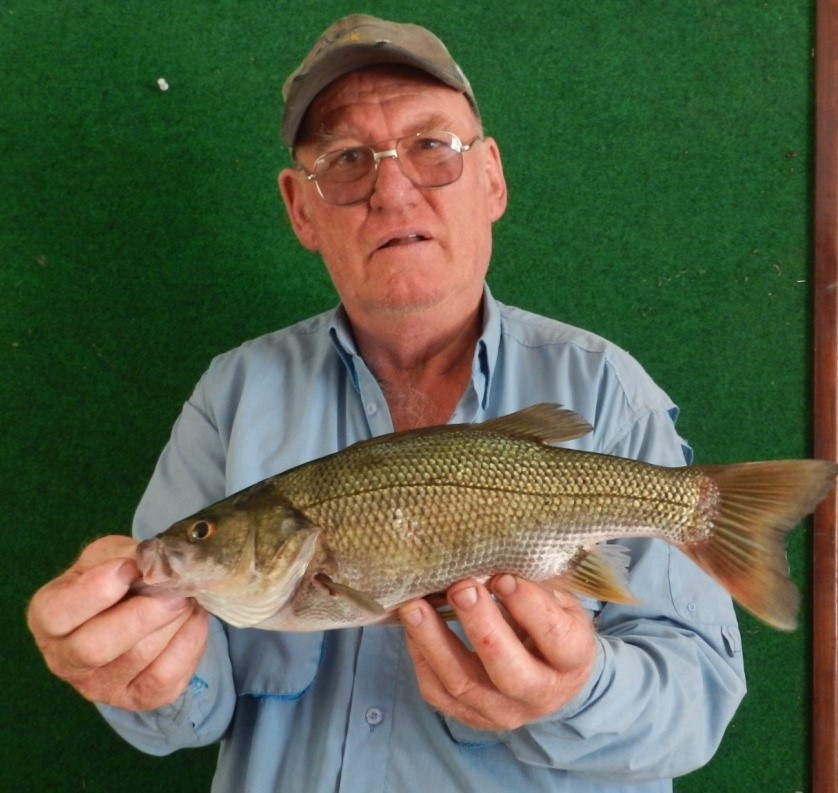
Better still take a photo of your catch and let it swim away for someone else to catch another day.
As a word of caution please let someone know if you are intending to travel up the Kingaham or Yabba Creek arms of the dam. It’s a long way back to the boat ramp if you have a break down.
Thanks!
Tackle Land would like to thank Rod for taking the time to share with you just a small amount of knowledge that he has gathered over the many years of Freshwater Fishing!
Rod has spent invested so much time, blood, sweat and tears (Not to mention the lures!) in the Lake Borumba system to get to understand the fishing times, places lures he needs to use. Rod has taken the time to appreciate what Lake Borumba has to offer and as he said, “Everyday you see something new”
So a huge thank to Rod for helping you have a better experience when you visit Lake Borumba!
